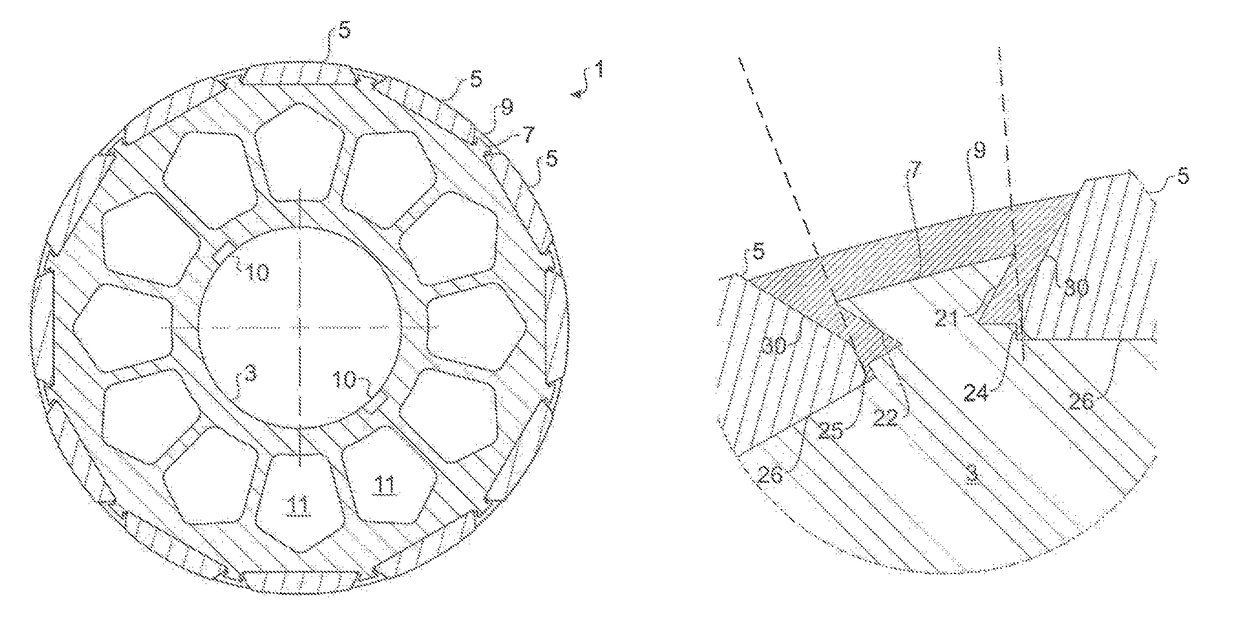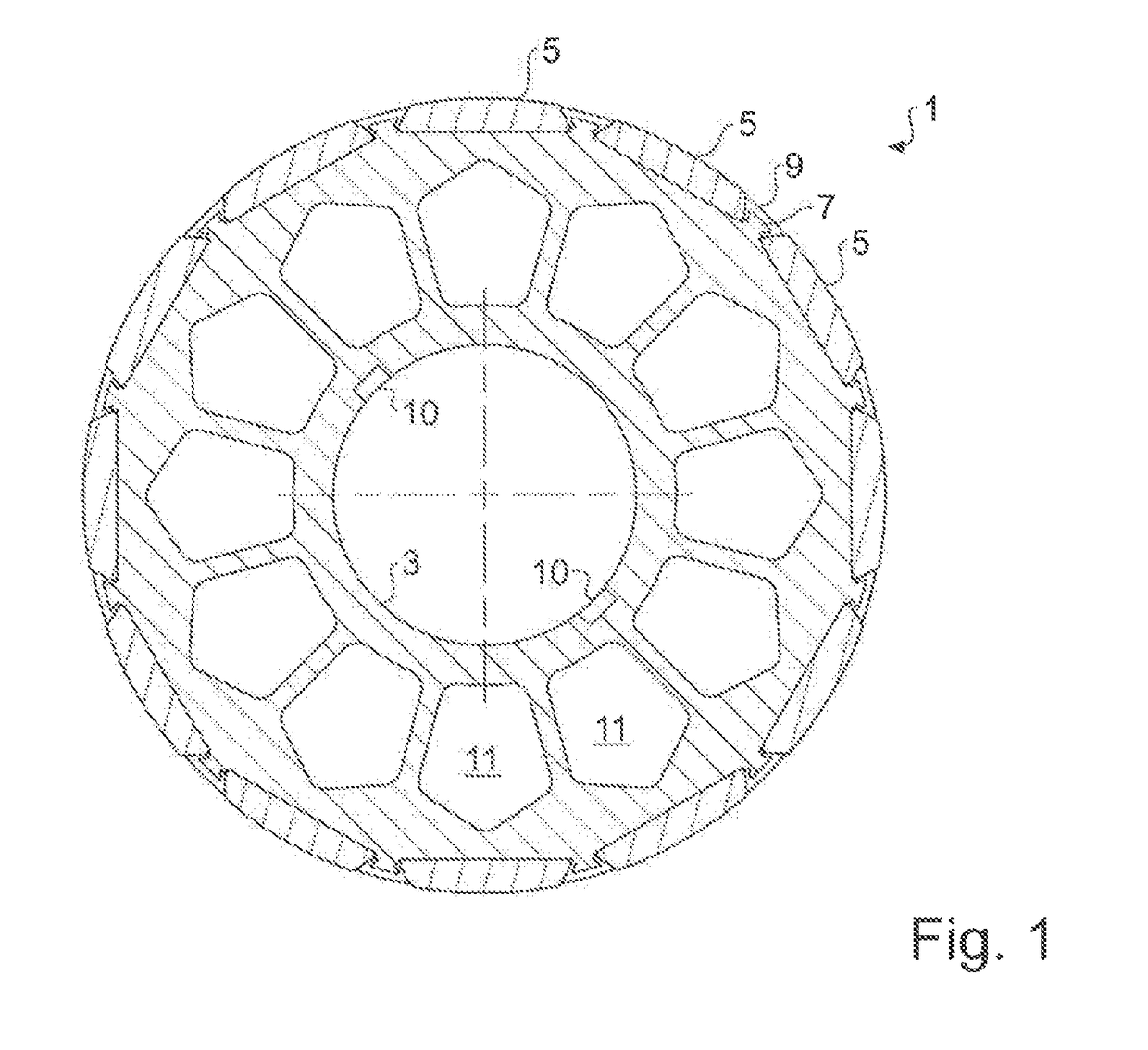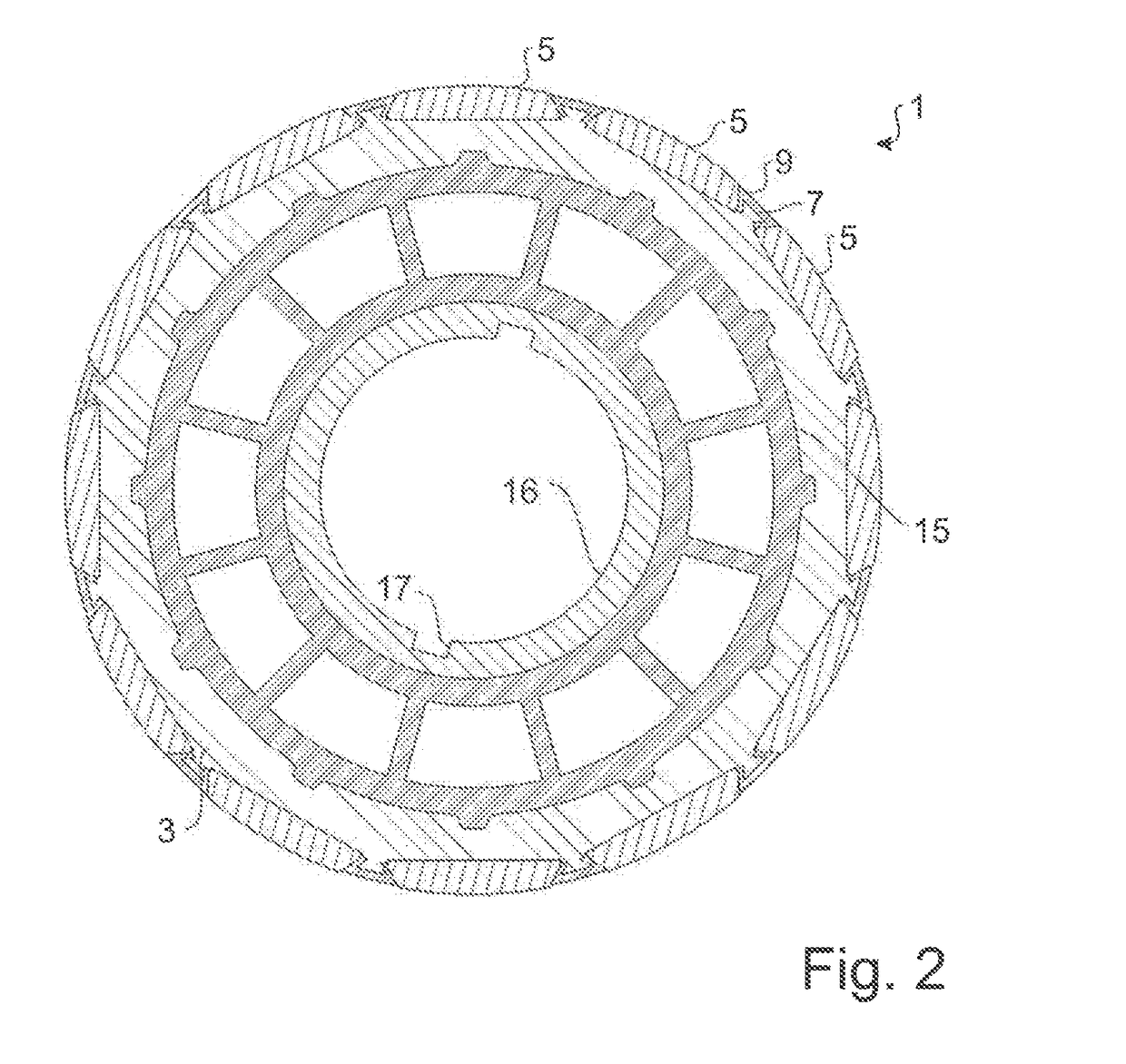Magnet carrier
a magnet carrier and rotor technology, applied in the direction of stator/rotor body manufacturing, magnetic circuit rotating parts, magnetic circuit shape/form/construction, etc., can solve the problems of limited rotational speed and impracticality of axial insertion of magnets, so as to improve the properties of plastics, save weight, and improve the effect of manufacturing
- Summary
- Abstract
- Description
- Claims
- Application Information
AI Technical Summary
Benefits of technology
Problems solved by technology
Method used
Image
Examples
embodiment
OF EMBODIMENT
[0031]In FIG. 1 is shown a typical embodiment of a rotor 1, which is embodied as a permanent magnet rotor. The rotor 1 comprises a magnet carrier 3, on which magnets 5 are arranged. The magnets 5 are arranged on the magnet carrier 3 between respective protrusions 7. The protrusions 7 are integrally designed with the magnet carrier 3, or are permanently connected with the latter in a form fit or a material bond, for example, are welded on, or bonded on with adhesive. Between the magnets 5 and the protrusions 7 plastic 9 is arranged in each case, which completely encloses the protrusions 7 and which abuts against both the protrusions 7 and against partial surfaces of the magnets 5 in a precise fit. The plastic thus forms filler elements between the magnets 5.
[0032]Details in conjunction with the protrusions 7, the filler elements of plastic 9 and the magnets 5 are shown in FIG. 4, wherein, moreover, an alternative possible configuration of this region is shown in FIG. 5.
[...
PUM
| Property | Measurement | Unit |
|---|---|---|
| separation distance | aaaaa | aaaaa |
| separation distance | aaaaa | aaaaa |
| width | aaaaa | aaaaa |
Abstract
Description
Claims
Application Information
 Login to View More
Login to View More - R&D
- Intellectual Property
- Life Sciences
- Materials
- Tech Scout
- Unparalleled Data Quality
- Higher Quality Content
- 60% Fewer Hallucinations
Browse by: Latest US Patents, China's latest patents, Technical Efficacy Thesaurus, Application Domain, Technology Topic, Popular Technical Reports.
© 2025 PatSnap. All rights reserved.Legal|Privacy policy|Modern Slavery Act Transparency Statement|Sitemap|About US| Contact US: help@patsnap.com



